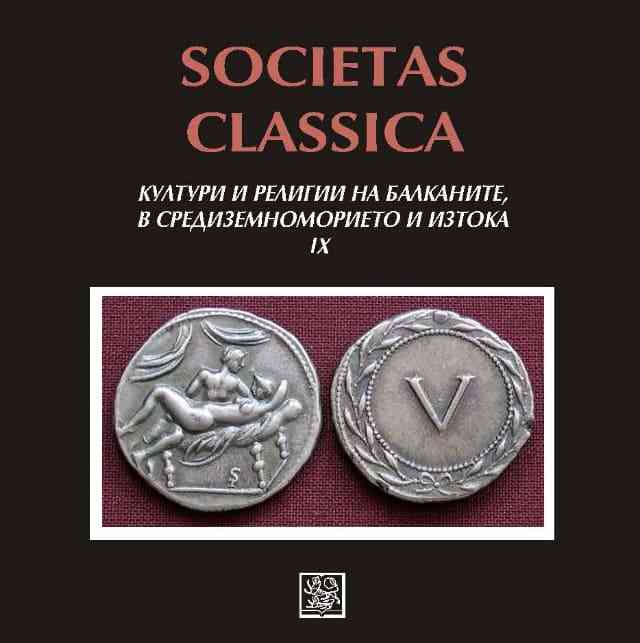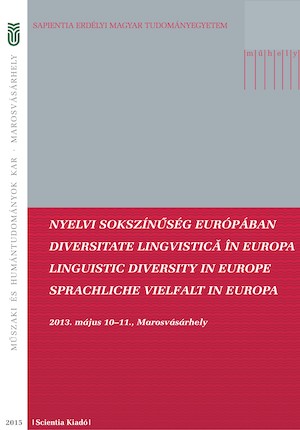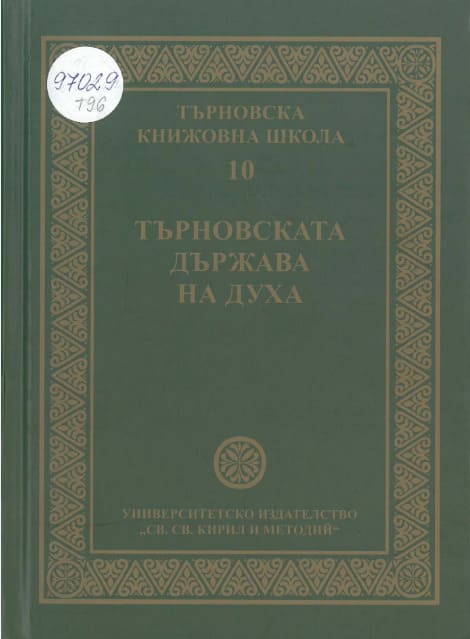Ктиторският портрет на митрополит Игнатий и Христовата генеалогия в катедралната църква на Търново „Св. Първоапостоли Петър и Павел“
Author(s): Zarko Zhdrakov,Plamen Orfeev / Language(s): English,Bulgarian,Old Slavonic
/ Publication Year: 0
Keywords: ktitor portait; Metropolitan Ignatius; Christ’s genealogy; St. Apostles Peter and Paul in Tarnovo
A photograph and a color copy of the fresco, made before the earthquake in 1913 have survived as evidence of the ktitor’s portrait. The ktitor is young and has a black beard, he is clad in a splendid bishop’s vestment with Latin crosses and a black monastic koukoulion. In the image, dedicated to the apostles of the Church of Rome Peter and Paul, he is positioned next to the Virgin Mary with Child on throne, above the western entrance of the church, where there had never been other ktitor’s portrait and inscription and, in fact, that gives grounds for the monumental composition to be dated in the same way as the main painting at the time of bishop Ignatius in 1442. The ktitor is depicted to give the model of the church with both of his hands to the apostles of the Church of Rome St. Peter, who presents him before Christ and his Mother, symbolizing the Church. He seems to be smaller than the other figures and his eyes are looking upwards to the Prince of the Apostles Peter – a vision of the Roman claim for supremacy. The ktitor’s model of the church reflects the state of the building with the external gal¬lery before painting the calendar in the sixteenth century, when the big arch-like barred windows were bricked in connection with the painting of the calendar. Most likely, that earlier reconstruction was done in the mid-fifteenth century, when the town of Turnovo was undertaking major buildings – e.g. the bridge and the mosque of Feruz Bey (1435). To identify the Turnovo metropolitan Ignatius, it is the style of the ktitor’s composition that also helps and the accompanying inscription with palaeographic characteristics that are specific for the signatures of the painter Nikolas (e.g. the anagram from 1442). It is known that Ignatius and the Ecumenical Patriarch Joseph II came from the Bulgarian tsarist family and had been in one and the same kellion of the Mount Athos monastery Alipu. That explains the exceptional presence of St. Athanasius of Mount Athos in the altar near the patron of metropolitan St. Ignatius the God-bearer in the diaconicon where the order of dressing was taking place. The Tree of Jesse is contaminated with the Genealogy of Christ and covers the whole space of the church. It unifies the conceptual program by spreading its branches around the Virgin Mary with Child in the apse, the arcade of the triumphant Heavenly Church with the parents of the Mother of God, the martyr priests and warriors, and the scenes from the life of Christ. A painting by Boris Denev painted before the earthquake in 1913 shows the lying Jesse at the southern pillar of the narthex where the stem of the genealogy tree is sprouting out. The vision is related to the genealogy in the Gospels of Matthew and Luke, and also in the Hermeneia of Dionysius of Fourna. The Genealogy of Matthew according to his father’s royal line starting from Abraham, Isaac and Jacob is associated with the one of Luke, according to his maternal line from the ancestors of the |Virgin Mary, Adam, Eve, and Abel, who never occupied the throne of the Jews and in this connection there is the unique branch with the righteous women. The origin of the two genealogies was on the western wall of the narthex facing Jesse. The direction of the visual narrative from left to right is indicated by the image of the semi full-face of Tara, the father of Patriarch Abraham, depicted on the western end of the southern wall of the narthex. The genealogy of Luke on the western wall of the narthex over the entrance had been developing north-wise in the narthex and the naos. The images of their descendants are partially preserved on the northern wall of the narthex (Noah with the Ark and his sons Sim and Japheth) and the naos (Nahor, the father of Tara). The genealogy after Mat¬thew on the western wall of the narthex, south of the entrance, spread over the apse with a unique branch, dedicated to the twelve sons of Patriarch Jacob. Further on, there are the sons of Judah, the Patriarch Kings Zar on the northern pillar in the narthex, and Phares on the southern wall of the narthex next to Tara, where it continues eastward reaching Jesse. From there on, the genealogy is continuing on the northern pillar with Patriarch Ravoam and then in the central arch next to Christ. The Tree of Jesse includes also images from the Hermeneia – e.g. the righteous women, the prophet Nathan, and King Joshua in the southern arch between the narthex and the naos, Patriarch Melchizedek at the northern pillar of the narthex and the pointed by him righteous men named Tobit and Tobias with scrolls unfolded in the northern arch between the narthex and the naos. The connection between the Old Testament and the New Testament is achieved along the west-east axis, from the narthex through the naos to the altar. Depicted in the apse is a branch with the Covenant of Patriarch Jacob as a symbol of the Old Testament unity and prefiguration of the Virgin Mary with Child – cf. the ewer with heavenly manna of Levi and Christ in the hands of Judas. Depicted in the central arch between the narthex and the naos is an allegory of the New Testament unity – the Council of Jerusalem, presented by God’s brethren Jacob and Judas, and the leaders of the apostles Peter and Paul, based of the Seven Ecumenical Synods in the narthex. The tree of Jesse is an element of imperial propaganda, as it is an evidence of the power being taken over from father to son. Most kings have their hands covered for the Holy Communion, but some point to the visual text – e.g. king Zar, the first-born son of Judas, points with his right hand the younger brother Perez from whom originates the family line of Jesse, and his great-grandson, King Aminadav, points with his left hand to his son Nahshon who is called upon to lead Judah’s family line before Moses during the escape of the Jews from Sinai. In the central arch, King Jotham points out to his father Uzziah, who during his life, made him a co-ruler, whereas the kings Sadok and his son Ahim, as well as their descendant St. Joseph, point to the Child dressed in golden vestments as in a dream of the prophet Jesse.
More...




